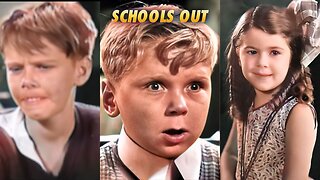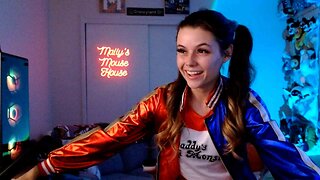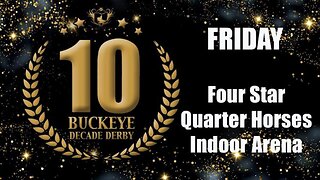FLASH GORDON (1936) Buster Crabbe, Jean Rogers & Charles Middleton | Sci-Fi, Serial | B&W
Flash Gordon is a 1936 superhero serial film. Presented in 13 chapters, it is the first screen adventure for Flash Gordon, the comic-strip character created by Alex Raymond in 1934. It presents the story of Gordon's visit to the planet Mongo and his encounters with the evil Emperor Ming the Merciless. Buster Crabbe, Jean Rogers, Charles Middleton, Priscilla Lawson and Frank Shannon portray the film's central characters. In 1996, Flash Gordon was selected for preservation in the United States National Film Registry by the Library of Congress as being "culturally, historically, or aesthetically significant"
SYNOPSIS
Flash Gordon, Dale Arden and Dr. Alexis Zarkov visit the planet Mongo to thwart the evil schemes of Emperor Ming the Merciless, who has set his planet on a collision course with Earth.
CAST & CREW
Buster Crabbe as Flash Gordon
Charles B. Middleton as Ming the Merciless
Jean Rogers as Dale Arden
Priscilla Lawson as Princess Aura
Frank Shannon as Dr. Alexis Zarkov
Richard Alexander as Prince Barin
Jack Lipson as King Vultan
Theodore Lorch as Second High Priest
James Pierce as Prince Thun
Duke York as King Kala
Earl Askam as Officer Torch
Richard Tucker as Professor Gordon
George Cleveland as Professor Hensley
Muriel Goodspeed as Zona
Directed by Frederick Stephani
Screenplay by Frederick Stephani, Ella O'Neill, George H. Plympton, (as George Plympton), Basil Dickey
Based on Flash Gordon by Alex Raymond
Produced by Henry MacRae
CinematographyJerome Ash, Richard Fryer
Edited by Saul A. Goodkind, Louis Sackin, Alvin Todd, Edward Todd
Production company Universal Pictures, King Features Syndicate
Distributed by Universal Pictures
Release date April 6, 1936
Running time 245 minutes (13 episodes)
Country United States
Language English
Budget $350,000
NOTES
According to Harmon and Glut, Flash Gordon had a budget of over a million dollars. Stedman, however, writes that it was "reportedly" $350,000.
Many props and other elements in the film were recycled from earlier Universal productions. The watchtower sets used in Frankenstein (1931) appear again as several interiors within Ming's palace. One of the large Egyptian statues seen in The Mummy (1932) is the idol of the Great God Tao. The laboratory set and a shot of the Moon rushing past Zarkov's returning rocket ship from space are from The Invisible Ray (1936). Zarkov's rocket ship and scenes of dancers swarming over a gigantic idol were reused from Just Imagine (1930). Ming's attack on Earth is footage from old silent newsreels, and an entire dance segment is from The Midnight Sun (1927), while some of the laboratory equipment came from Bride of Frankenstein (1935). The music was also recycled from several other films, notably Bride of Frankenstein, Bombay Mail, The Black Cat (both 1934), Werewolf of London (1935), and The Invisible Man (1933).
Crabbe had his hair dyed blond to appear more like the comic-strip Flash Gordon. He was reportedly very self-conscious about this and kept his hat on in public at all times, even with women present. He did not like men whistling at him. Jean Rogers also had her hair dyed blonde prior to production, "apparently to capitalize on the popularity of Jean Harlow". Brunette was actually the natural hair color for both actors.
According to the 1973 reference The Great Movie Serials: Their Sound and Fury by Jim Harmon and Donald Glut, Ming's makeup and costuming were designed to resemble Fu Manchu, a fictional "supervillain" popularized in earlier Hollywood films and in a series of novels first published in England in 1913.
Exterior shots, such as the Earth crew's first steps on Mongo, were filmed at Bronson Canyon.
Universal hoped to regain an adult audience for serials with the release of Flash Gordon and by presenting it in many of the top or "A-level" theaters in large cities across the United States. Multiple newspapers in 1936, including some not even carrying the Flash Gordon comic strip, featured half- and three-quarter-page stories about the film as well as copies of Raymond's drawings and publicity stills that highlighted characters and chapter settings.
The film was the first outright science-fiction serial,[citation needed] although earlier serials had contained science-fiction elements such as gadgets. Six of the fourteen serials released within five years of Flash Gordon were science fiction.
The serial film was also edited into a 72-minute feature version in 1936, which was only exhibited abroad, until being released in the US as 1949 as Rocket Ship by Sherman S. Krellberg's Filmcraft Pictures.
Flash Gordon was Universal's second-highest-grossing film of 1936, after Three Smart Girls, a musical starring Deanna Durbin. The Hays Office, however, objected to the revealing costumes worn by Dale, Aura and the other female characters. In response to those objections, Universal designed more modest outfits for the female performers in the film's two sequels.
-
 20:39
20:39
Lost n Found Films
19 days agoSCHOOL'S OUT(1930) Matthew 'Stymie' Beard, Norman 'Chubby' Chaney & Jackie Cooper | Comedy | B&W
2141 -
 1:19:23
1:19:23
Mally_Mouse
6 hours agoLet's Hang - Cosplay Stream!!
38.4K1 -
 1:05:06
1:05:06
Lou Dobbs
12 hours agoLou Dobbs Tonight 5-31-2024
53.1K31 -
 1:42:57
1:42:57
The Quartering
12 hours agoDonald Trump Conviction BACKFIRES, Massive Funds Raised, Democrats Swap Parties & More
88.8K91 -
 26:11
26:11
Stephen Gardner
10 hours ago🔴HUGE TRUMP WIN! Biden, Hillary, Obama ALL IN BIG TROUBLE NOW!!
85.9K437 -
 9:42
9:42
Breaking Points
1 day agoTERRIFIED Biden Moves DNC Online
72.9K67 -
 1:09:34
1:09:34
Edge of Wonder
10 hours agoGravity Isn’t Real? Fact Checking Terrence Howard
44.9K14 -
 1:37:04
1:37:04
2 MIKES LIVE
13 hours ago2 Mikes Live #73 Open Mike Friday 5-31-24
38.8K6 -
 1:45:34
1:45:34
Total Horse Channel
1 day ago2024 Buckeye Reining Series | Friday Night | 7:30 pm EST
26.6K -
 1:31:09
1:31:09
The Big Mig™
1 day agoProject Defuse, The Covid-19 Bioweapon Op w/ Dr. Richard M. Fleming
55K21